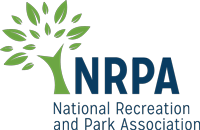Swim activities, whether on site at camp or on a trip, can be the most challenging part of camp. Not only do you have to create a fun and engaging environment, you have to do it safely with large groups of kids, all of which will have varying swim levels. Regardless if you have your own pool at camp or are visiting other pools or water parks, it is imperative that you have a proper swim program in place to manage your staff and campers around water. Here are some guidelines on things to consider when managing swimming at camp.
Have a Plan
The most important thing you can do to make sure your swim activities are always a success is to have a plan. It doesn’t matter if you have your own pool that your camp swims at every day or if you go off site to pools or water parks, everything should be planned out. The plan should include how you are going to staff and supervise the swim activity, the camp policies for swimming, and evaluating the swim areas and how to manage them. Your swim plan should be part of your organizations emergency action plan and over risk management plan.
Staffing
Safe and successful swim activities at camp starts and ends with your staff. Camps with your own pools may have both a group of certified lifeguards and counselors to manage while others may rely on their counselors to manage swimming activities and work with the lifeguards at the location you are swimming. When organizing policies and procedures for swimming at camp make sure to consider the following for staffing:
- Teach proper supervision around the water. Counselors should always be actively supervising in the water or on the banks in view of the kids. Hanging out at a picnic table or laying out in the sun while your kids swim is unacceptable. Even with lifeguards on duty, counselors need to be active in the water with the kids.
- Certify all staff in CPR and basic first aid prior to camp. In-service trainings should be conducted if you run your own aquatics facility.
- Maintain at least a 1-10 staff to camper ratio. This ratio can get smaller for a group of younger kids.
- Before ever entering a swim area review the plan and policies with staff to ensure expectations are set. This will get staff on the same page on what needs to happen to ensure the campers are safe and supervised properly.
- While supervising make sure staff are rotating positions and positioned throughout the swim area to constantly have fresh eyes on the kids in the water. Each staff should supervise a specific zone and do not allow a zone to get too crowded with kids.
- Make sure staff are familiar with their campers swimming abilities either based on their registration form from parents or past experience with a camper. The more you are around the water with your campers the more you should know about who may need an extra eye during swim activities.
Swim Policies
Prior to ever taking a registration, your swim policies should be outlined in your camp handbook. Here are some policies that should be considered with your swim program:
- Set different swim levels during registration so parents can give you an idea on where their child falls. Each level should have a different requirement on what the camper can and cannot do when swimming at camp.
- Swim test each child prior to getting in the water. If the results of the swim test are different than what the parent told you at registration make sure they are aware and it is updated for the next swim activity.
- Non-swimmers should have USCG approved life jackets for swimming and not allowed in any deep end or areas where you cannot see the bottom.
- Don’t swim anywhere without certified lifeguards. It is not worth the liability and risk to swim without outside supervision, regardless of how well trained your counselors may be.
- Always review swim rules with the campers before getting in the water and hold them accountable if they misbehave.
- Use the buddy system to have campers keep tabs on each other in and around the water.
- Do not allow horseplay in or around the water. Kids shouldn’t be touching each other in the water, hanging on each other or counselors, jumping in shallow water, running on the pool deck, etc.
- Always provide a supervised space for non-swimmers to play games or activities outside the water. There will always be kids that aren’t interested in going in the water, either because they cannot swim or don’t feel like it. Have a space for those kids to play to avoid them getting bored or wandering near the water when they are not supposed to be.
Swim Area
The type of swim area you are in can require higher levels of supervision depending on what challenges those spaces present. Here are some guidelines on things to consider when choosing where to swim and what to avoid to cause unnecessary safety issues.
- Always try to swim in areas where there is high visibility in the water such as a pool, spring, or clear lake. If you cannot see the bottom, keep swimming confined to shallow water.
- Avoid crowded swim areas. The more campers and non-campers that are mixed together in high density swim areas will exponentially increase the chances of an incident.
- Swim in areas with just your camp group when possible. Anytime you can avoid mixing your camp in with the general public, the better your experience will be and the easier it will be to manage.
- Don’t go on beach trips, even when lifeguards are on duty. Swimming at the beach in the ocean, intercoastal waterway, or large lake brings on many more dangers that are out of your control. Things like current, waves, water depth, water clarity, sea life, and the sheer size of the swim area make it way more likely an incident may occur.
- Avoid wave pools and lazy rivers at water parks. Although these areas can be fun as a family or individual park goer, they generally become crowded and unpredictable when managing a large group of campers.
Managing your swim program at camp can be daunting task but if you have a plan, policies, and well trained staff your swim activities will be safe, fun, and always a success!
Favorite







